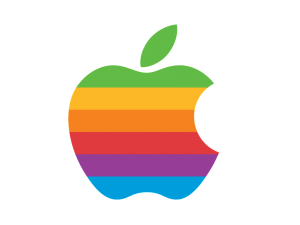Apple , Apple ,Apple. Your phone is apple, your watch is apple, your laptop is apple, your earphones? HAVE to be apple! Ask an apple user to switch to Android, never. Ask an apple user what they are doing? Waiting for the next upgraded Iphone.

image source:http://logok.org/apple-logo/
My aim was to answer the question “How did Apple achieve this?” and here is my answer….Apple did this by creating what you want, without you knowing you wanted it. It’s a bit of a mind boggler so i’ll just put it in 2 words :Product orientation; This is an outward looking approach, where frims first develop the product and then try to sell them. This is what Apple does, rather than a market oriented strategy (outward looking approach, firms develop the product based on market research).
Apple has continued in the pattern of producing efficient , high quality products which they believe will be valued above the market fashion. This is one of the best strategies in markets where quality is key, such as the tech market. I did not know i’d like to have a phone which can be unlocked by my fingerprint. But when i got it, it gave me value in terms of phone safety. This is a clear example of Product orientation that Apple has used, they make the product with features us consumers didn’t even know we needed, and we love it. The consumer starts thinking “i wonder what they’ll come up with next! i can’t wait”, instead of “Oh i need this, and i need that”. The anticipation of innovation and the “cool” new aspects of the product keep the consumers so engrossed in the company…in my view, this is basically developing a relationship with customers. And it pays off, Apple’s sales go through the charts, their brand name is globaly recognised, they are “a movement!” (Nathan Hangen, co-founder of Virtuous Giant, creator of IgnitionDeck, a crowdfunding plugin for WordPress.)
Works cited:
Farquharson, Alastair, and Peter Stimpson. “MARKETING.” Cambridge International AS and A Level Business Studies Teacher’s Resource. 2nd ed. Cambridge: Cambridge UP, 2010. N. pag. Print.